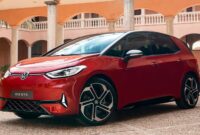During the peak of the COVID-19 pandemic, travel restrictions threatened Honda’s timeline for launching new products. Looking for ways to get engineers in the room with design studios, companies are turning to immersive virtual reality (VR) technology.
Using VR, the Honda Design Studio in LA collaborates with various engineering teams and global design groups, creating computer-aided design models. This approach allowed for immediate feedback, allowing the team to make real-time changes in developing the 2023 Honda Pilot and 2024 Honda Prologue EV.


“Combining virtual and augmented reality in the design process allows our Honda engineers and designers to combine digital content and physical assets in a cohesive way to interact with what they experience and touch in an immersive environment,” said Mathieu Geslin, Honda Design Studios. VR technology leader. “The Honda Prolog is key to fully employing VR in the data-driven design process, with modeling clay as a verification tool, something we will continue into the development of other Honda products.”
While the Honda Prolog also uses a full-size exterior clay model to refine the details, development of the interior design is mainly done using VR. Honda says this virtual method transforms the design process, providing better visualization and collaboration.
The design team also leveraged technology for product evaluation of the 2023 Honda Pilot. This approach allowed for a holistic view of color, materials, finishes and trim. As a result, design studios in LA and Japan can provide immediate feedback and make changes in real time.
Honda’s design team began exploring the possibilities of VR six years ago, testing it to find new, more efficient ways of building products. This work allows the team to deploy technology during the COVID pandemic.
The new 2023 Honda Pilot goes on sale this week for a base price of $39,150. It replaces the third-generation model, which debuted in 2016. The Prolog EV is expected to launch in 2024.



